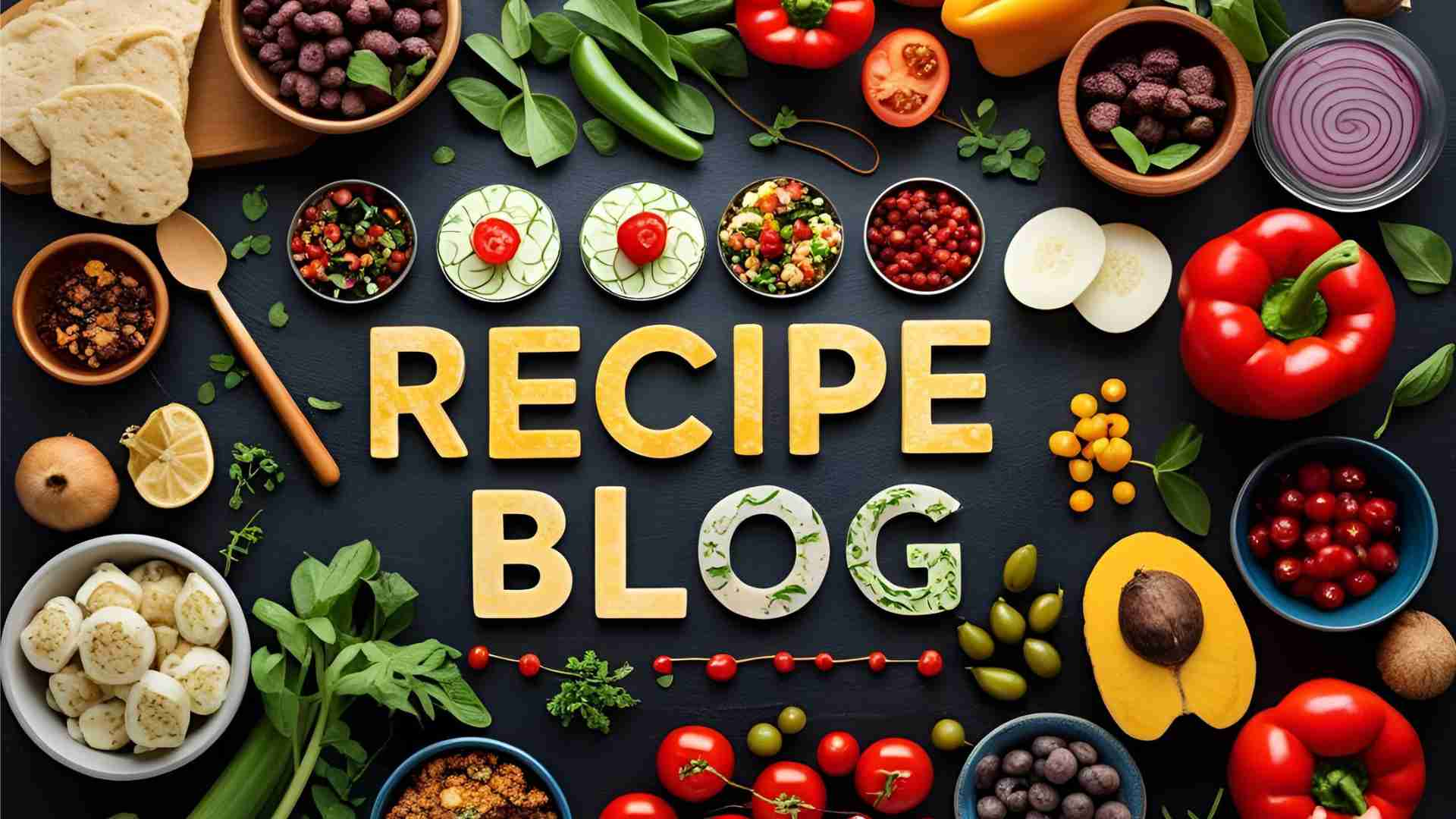How to Trademark a Recipe Blog Name (And Should You Bother?)
Learn how to trademark a recipe blog name and protect your brand. Discover the process, costs, benefits, and whether it’s worth it for your blog.
In the digital age, where recipe blogs have become a cornerstone of culinary culture, protecting your blog’s identity is a critical consideration for bloggers aiming to establish a unique brand. With the rise of food blogs, from niche recipe creators to large-scale culinary platforms, the question of whether to trademark a blog name has gained prominence. Trademarking can safeguard your intellectual property, enhance brand recognition, and provide legal recourse against infringement.
However, the process is not always necessary for every blogger, and the decision hinges on your blog’s purpose, audience, and future goals. This comprehensive guide explores the intricacies of trademarking a recipe blog name, the benefits and drawbacks, the step-by-step process, associated costs, and whether it’s worth the effort. Additionally, it addresses protecting original recipes as intellectual property, offering practical insights for bloggers and culinary entrepreneurs.
Why Trademark a Recipe Blog Name?
Trademarking a recipe blog name establishes legal ownership, granting exclusive rights to use the name in connection with your blog’s goods or services. This protection is particularly valuable for bloggers who view their platform as a business or a brand rather than a personal hobby. A trademark can prevent competitors from using a similar name, reduce confusion in the marketplace, and solidify your brand’s identity. For recipe blogs, which often rely on unique culinary perspectives or signature dishes, a trademark can enhance credibility and create a foundation for growth, such as licensing opportunities or collaborations.
Benefits of Trademarking Your Blog Name
- Legal Ownership and Protection: A registered trademark grants you exclusive rights to your blog name, allowing you to pursue legal action against unauthorized use or infringement. For example, a trademarked name like Nom Nom Paleo ensures that no other blog can use a confusingly similar name to capitalize on its reputation.
- Brand Recognition and Credibility: A trademark signals professionalism to your audience, reinforcing that your content is original and valuable. It distinguishes your blog in a crowded digital space, fostering trust among readers and potential partners.
- Marketplace Presence: Your trademark appears in the USPTO’s Trademark Electronic Search System (TESS), serving as public notice of your rights. This visibility deters others from adopting similar names and strengthens your legal standing.
- Prevention of Infringement: Trademarking enables you to block others from using your name for similar services, such as another food blog or culinary product. It also provides grounds to challenge imported goods bearing your mark.
- International Expansion: A U.S. trademark simplifies the process of securing international trademark rights, which is crucial if you plan to expand your blog’s reach globally.
- Use of the ® Symbol: Once registered, you can use the ® symbol, signaling official trademark status and deterring potential infringers.
When Should You Trademark Your Blog Name?
Consider trademarking your recipe blog name if the following apply:
- Unique and Original Content: Your blog offers distinctive recipes or culinary insights unavailable elsewhere, making it a valuable intellectual property.
- Business or Branding Focus: Your blog promotes a brand, generates revenue, or serves as a platform for business opportunities, such as sponsored content or product sales.
- Significant Audience: You have a substantial following, with regular readers or subscribers who associate your blog name with quality content.
- Competitor Imitation: You’ve noticed other blogs with names or designs similar to yours, risking brand confusion.
- Commercial Evolution: Your blog has transitioned from a personal project to a business venture, such as selling cookbooks, meal kits, or branded merchandise.
If these factors resonate, trademarking could be a strategic move to protect and grow your brand. Consulting a trademark attorney can help clarify whether this step aligns with your goals.
When Should You Avoid Trademarking?
Not every recipe blog requires trademark protection. Reconsider trademarking if:
- Personal Content: Your blog primarily shares personal anecdotes or casual content without commercial intent.
- Similarity to Existing Trademarks: Your blog name is too similar to an existing trademarked name, increasing the risk of rejection or legal challenges.
- Repurposed Content: Your blog heavily relies on content copied or adapted from other sources, which may weaken your claim to originality.
- No Commercial Intent: You have no plans to monetize or brand your blog, making trademark protection unnecessary.
- Pre-Launch Stage: You haven’t started publishing content, as trademark applications typically require evidence of use in commerce.
If you’re uncertain, a trademark attorney can assess your blog’s eligibility and advise on the best course of action.
The Trademarking Process for a Recipe Blog Name
Trademarking a recipe blog name involves a structured process through the United States Patent and Trademark Office (USPTO). Below is a detailed guide to the steps, ensuring you’re well-prepared to navigate the application process.
Step 1: Assess the Need for a Trademark
Evaluate whether your blog warrants trademark protection based on its commercial significance, audience size, and branding goals. For recipe blogs, consider whether your name is tied to a unique culinary identity or business model. For example, a blog like The Pioneer Woman benefits from trademark protection due to its extensive brand ecosystem, including cookbooks and merchandise.
Step 2: Decide on Professional Assistance
While you can file a trademark application independently, hiring a trademark attorney increases the likelihood of approval. Attorneys can navigate complex legal requirements, conduct thorough searches, and handle USPTO correspondence. According to USPTO data, applications filed with legal assistance have a higher success rate due to proper classification and compliance.
Step 3: Identify Your Mark Format
Choose the format of your trademark:
- Standard Characters: Protects the blog name as text, regardless of font or style (e.g., The Huffington Post).
- Stylized/Designed: Protects a specific logo or design associated with your blog.
- Sound: Less common for blogs but applicable for audio branding, such as a jingle.
For recipe blogs, trademarking both the name and logo is common to cover all branding aspects. File separate applications for each to ensure comprehensive protection.
Step 4: Classify Your Goods or Services
The USPTO categorizes trademarks into 45 classes of goods and services. Recipe blogs typically fall under Class 41 (education and entertainment services, including online journals and blogs) or Class 35 (business services, if your blog involves advertising or commerce). For example, a blog offering cooking tutorials might use Class 41, while one selling branded products might include Class 35. Consult the USPTO’s Acceptable Identification of Goods and Services Manual for precise classification.
Step 5: Conduct a Comprehensive Trademark Search
Before filing, perform a thorough search to ensure your blog name isn’t confusingly similar to existing trademarks. Use the USPTO’s TESS database to check registered marks and consider common law trademarks (unregistered marks used in commerce). A comprehensive search includes:
- Exact and similar names in related classes.
- Variations in spelling, phonetics, or meaning.
- State and international trademark databases.
A trademark attorney can conduct a deeper search, including common law and domain name records, to minimize rejection risks.
Step 6: Determine Your Filing Basis
Choose between two filing bases:
- Use in Commerce: For blogs already operating and using the name commercially (e.g., through advertising or product sales).
- Intent to Use: For blogs not yet launched but with a bona fide intent to use the name in commerce. You must provide proof of use within six months of approval or request an extension.
For example, a new recipe blog planning to sell branded spice blends might file under “intent to use” to secure the name before launch.
Step 7: File Your Application
Submit your application through the USPTO’s Trademark Electronic Application System (TEAS). Required materials include:
- Trademark Description: A clear description of the mark (e.g., text or logo).
- Specimen of Use: Evidence of the mark in commerce, such as a screenshot of your blog’s homepage or branded product packaging.
- Filing Fee: Varies based on the TEAS option (see cost details below).
- Class Identification: Specify the relevant trademark class(es).
After submission, the USPTO assigns an examining attorney to review your application, a process that takes 4–6 months. If approved, your mark is published in the Official Gazette for a 30-day opposition period. If no objections arise, you receive a Registration Certificate within 12–18 months.
Step 8: Maintain Your Trademark
Post-registration, maintain your trademark by:
- Using the Mark Consistently: Ensure your blog name appears consistently across platforms.
- Filing Maintenance Documents: Submit a Declaration of Use between the 5th and 6th years and renew every 10 years.
- Monitoring for Infringement: Regularly check for unauthorized use and take legal action if necessary.
Costs of Trademarking a Recipe Blog Name
The cost to trademark a blog name depends on the TEAS filing option and additional classes. Below is a breakdown based on current USPTO fees:
| Filing Option | Basic Fee | Additional Class Fee | Features |
|---|---|---|---|
| TEAS Plus | $250 | $125 per class | Lowest cost, requires email communication and pre-approved descriptions. |
| TEAS Reduced | $275 | $125 per class (deferred) | Allows flexibility in descriptions, email communication. |
| TEAS Regular | $350 | Varies | Allows paper submissions, more flexibility but higher cost. |
Additional Costs:
- Attorney Fees: $500–$2,000, depending on complexity and legal assistance.
- Search Fees: $100–$500 for professional trademark searches.
- Maintenance Fees: $100–$500 for declarations and renewals every 5–10 years.
For a recipe blog trademarked in one class using TEAS Plus, expect a minimum cost of $250, with potential attorney fees increasing the total to $750–$2,250.
Protecting Recipes as Intellectual Property
For recipe bloggers, protecting original recipes is as crucial as safeguarding the blog name. However, recipes pose unique challenges due to their functional nature.
Can You Trademark a Recipe?
Recipes themselves cannot be trademarked, as trademarks protect brand identifiers (names, logos) rather than processes or compositions. However, you can trademark a recipe’s name if it serves as a source identifier. For example, Dominique Ansel’s Cronut® is a trademarked name, preventing others from using it for similar pastries. Similarly, a unique dish name tied to your blog (e.g., Signature Strawberry Rhubarb Jam) could be trademarked under Class 29 (food products) or Class 30 (staple foods).
Alternative Protections for Recipes
Since trademarking a recipe is not feasible, consider these methods:
- Trade Secrets: Treat your recipe as a trade secret by limiting disclosure to trusted individuals bound by confidentiality agreements. For example, Coca-Cola’s formula remains a trade secret, with only select employees knowing parts of the recipe.
- Copyright for Compilations: While individual recipes are not copyrightable due to their functional nature, a collection of recipes (e.g., a cookbook) can be copyrighted as a compilation. The creative expression in recipe descriptions or accompanying narratives may also qualify for copyright protection.
- Patents: Utility patents are rarely granted for recipes due to the “novel” and “nonobvious” requirements. However, design patents can protect a dish’s unique visual presentation, such as Cold Stone Creamery’s patented ice cream cake design. Patents require public disclosure, which may not suit recipes you wish to keep secret.
Practical Example: Protecting a Signature Recipe
Suppose you create a unique Spicy Avocado Toast recipe for your blog. To protect it:
- Trademark the Name: File for a trademark on Spicy Avocado Toast if it’s a signature dish sold commercially (e.g., through a café or packaged product).
- Use Trade Secrets: Share the recipe only with employees under non-disclosure agreements (NDAs).
- Copyright Descriptions: Copyright the creative narrative or photos accompanying the recipe on your blog.
Should You Bother Trademarking Your Recipe Blog Name?
The decision to trademark depends on your blog’s goals and resources. Below is a decision-making framework:
| Factor | Trademark Recommended | Trademark Not Necessary |
|---|---|---|
| Blog Purpose | Business or branding focus | Personal or hobby-based |
| Audience Size | Large, loyal following | Small or casual readership |
| Revenue Generation | Monetized through ads, products, or partnerships | Non-commercial |
| Competitor Risk | Similar blogs exist | No similar blogs |
| Future Plans | Expansion, licensing, or franchising | Limited growth plans |
Pros and Cons of Trademarking
Pros:
- Legal protection against infringement.
- Enhanced brand credibility and market presence.
- Opportunities for licensing and expansion.
- Deterrence of copycats.
Cons:
- Costs (filing fees, attorney fees).
- Time-intensive process (12–18 months).
- Ongoing maintenance requirements.
- Limited protection for personal blogs.
Chart: Trademark Decision Process

Monitoring and Enforcing Your Trademark
After trademarking, monitor your blog name to prevent unauthorized use. Use tools like Google Alerts or trademark watch services to detect infringement. If infringement occurs, send a cease-and-desist letter or pursue legal action with an attorney’s assistance. Regular monitoring preserves your brand’s integrity and ensures your trademark remains a valuable asset.
Protecting Recipes vs. Blog Names
While trademarking a blog name protects your brand, recipes require alternative strategies. Below is a comparison:
| Protection Type | Blog Name | Recipe |
|---|---|---|
| Trademark | Yes, for name/logo | Yes, for dish name only |
| Copyright | No | Yes, for compilations or creative descriptions |
| Trade Secret | No | Yes, for recipe details |
| Patent | No | Rare, for novel processes or designs |
Real-World Examples
- Nom Nom Paleo: This niche blog trademarked its name to protect its unique identity and prevent imitation, supporting its cookbooks and product lines.
- The Pioneer Woman: Ree Drummond’s trademarked blog name underpins her extensive brand, including TV shows and merchandise.
- Cronut®: Dominique Ansel’s trademarked pastry name ensures competitors use different names for similar products, preserving brand exclusivity.
Conclusion
Trademarking a recipe blog name is a strategic decision that depends on your blog’s commercial goals, audience, and competitive landscape. For bloggers building a brand, generating revenue, or facing imitation, trademarking offers legal protection, credibility, and growth opportunities. The process, while time-consuming and costly, is straightforward with proper preparation, and alternatives like trade secrets or copyrights can protect recipes themselves. By understanding the benefits, costs, and steps involved, you can make an informed decision to safeguard your culinary brand. For personalized guidance, consult a trademark attorney to ensure your application aligns with your vision.
Please share these How to Trademark a Recipe Blog Name (And Should You Bother?) with your friends and do a comment below about your feedback.
We will meet you on next article.
Until you can read, Creamy Mushroom Omelette






